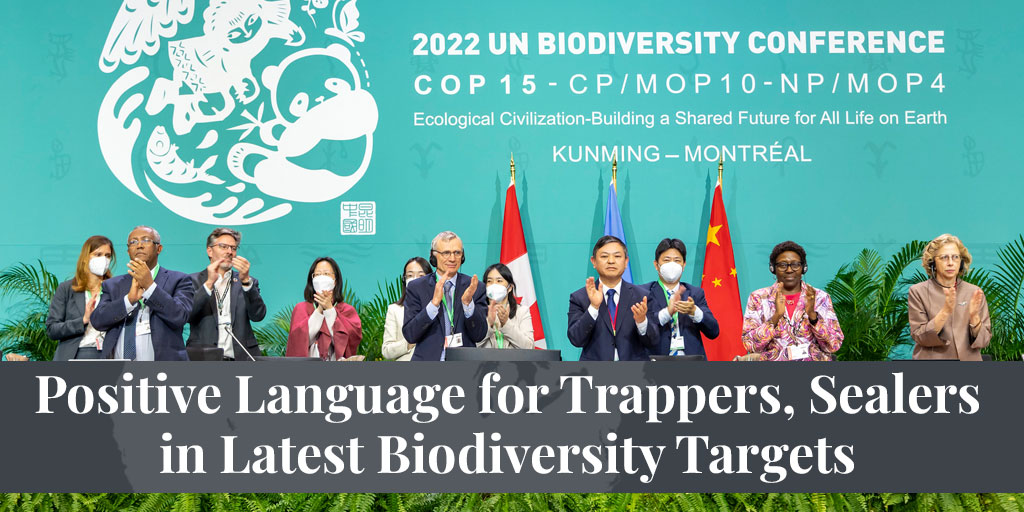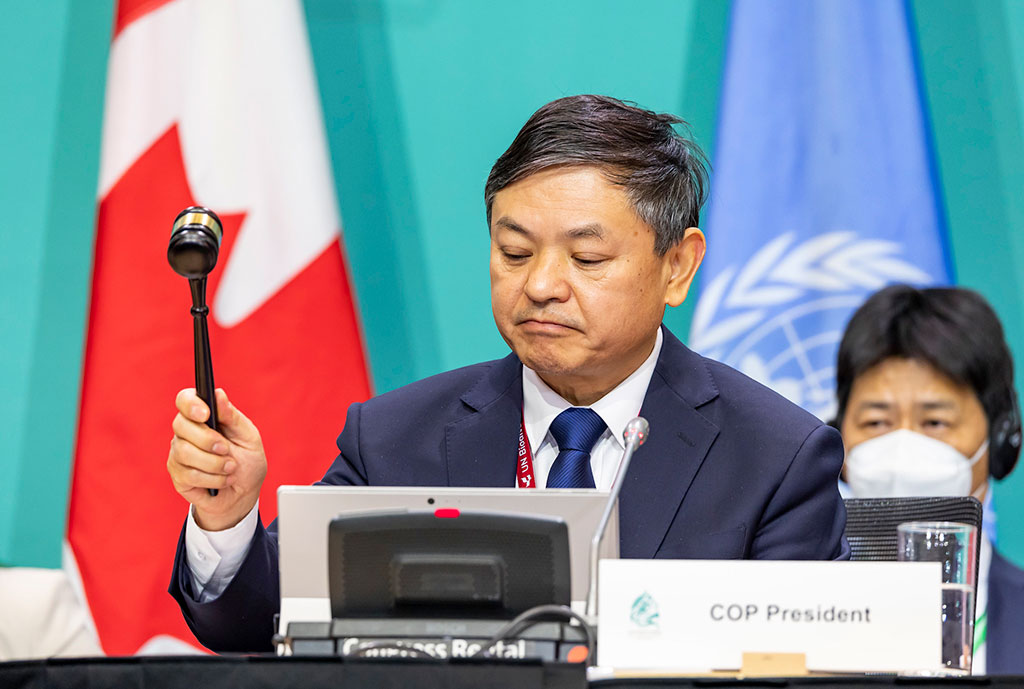
When it comes to environmental treaties, nothing grabs news headlines these days like those addressing climate change, but there are other multilateral treaties that also demand our attention, not least the Convention on Biological Diversity. Since entering into force in 1993, the CBD’s Parties (now numbering 196) have striven to develop strategies for the conservation and sustainable use of biodiversity, and today the treaty is seen by many as the key document regarding sustainable development.
So it is heartening for Canada’s trappers and sealers that the recently concluded 15th Conference of the Parties (COP15) ratified a strategic plan that emphasizes its commitment to the sustainable use of wildlife as a means of arresting biodiversity loss, while stressing the important role to be played by Indigenous and local communities. Indeed, important parts of the Kunming-Montreal Global Biodiversity Framework align closely with the core values advocated by the Fur Institute of Canada and its members.
The Framework is named in part after the Chinese city of Kunming, where COP15 was scheduled to be held in 2020. But the meeting was postponed repeatedly due to Covid-19, and was finally split into two sessions. The first, mostly an online event, took place in October 2021, and saw delegates agree provisionally to draft Global Targets in line with the theme “Ecological Civilization: Building a Shared Future for All Life on Earth”. These Targets, to be met by 2030, are intended as stepping stones on the way to achieving Global Goals by 2050.
The second session, held last December 7-19 in Montreal, saw further discussion of the Targets, and finally the adoption – after more than four years of negotiations – of the Framework.
SEE ALSO: Official CBD press release, December 19, 2022.
Positive Language
On behalf of the FIC, I attended the meeting in Montreal as a Non-Governmental Organization observer to advocate for the important role of sustainable use of wildlife in biodiversity conservation. Of the 23 Targets identified for urgent action, we should be particularly pleased with the language of three, numbered 5, 9 and 16 (see below).
Targets 5 and 9 are particularly noteworthy for Canada’s sealers and trappers because they explicitly endorse the sustainable use of wildlife as an essential component in conserving biodiversity.
“Ensure that the use, harvesting and trade of wild species is sustainable, safe and legal,” begins Target 5. It also makes specific reference to “respecting and protecting customary sustainable use by indigenous peoples and local communities.”
Target 9 then underscores the importance of “providing social, economic and environmental benefits for people, especially those in vulnerable situations and those most dependent on biodiversity,” and “protecting and encouraging customary sustainable use by indigenous peoples and local communities.”
Both Targets 5 and 9, therefore, are in perfect alignment with the conservation ethic of Canada’s fur harvesters.
Sustainable Consumption
Canada’s trappers, sealers and furriers can also play a key role in helping to achieve Target 16, which calls on Parties to “Ensure that people are encouraged and enabled to make sustainable consumption choices including by establishing supportive policy, legislative or regulatory frameworks, improving education and access to relevant and accurate information and alternatives, …”
Everyone in the fur trade must help consumers to make these sustainable consumption choices, in particular by educating them about the environmental benefits of natural fur over fast fashion that relies on synthetics.
Canadian and international consumers should be made to feel confident that by wearing natural fur products, they are contributing to essential wildlife management and supporting biodiversity conservation. We also need to work to ensure that government decision-makers understand the role for fur harvesters in achieving these goals, instead of allowing them to focus on the hobby horses of anti-use environmental groups. The fur trade has long taken this position, and as its latest strategic plan spells out, the CBD agrees.
***
Key Biodiversity Targets for Trappers, Sealers

Target 5: “Ensure that the use, harvesting and trade of wild species is sustainable, safe and legal, preventing overexploitation, minimizing impacts on non-target species and ecosystems, and reducing the risk of pathogen spill-over, applying the ecosystem approach, while respecting and protecting customary sustainable use by indigenous peoples and local communities.”
Target 9: “Ensure that the management and use of wild species are sustainable, thereby providing social, economic and environmental benefits for people, especially those in vulnerable situations and those most dependent on biodiversity, including through sustainable biodiversity-based activities, products and services that enhance biodiversity, and protecting and encouraging customary sustainable use by indigenous peoples and local communities.”
Target 16: “Ensure that people are encouraged and enabled to make sustainable consumption choices including by establishing supportive policy, legislative or regulatory frameworks, improving education and access to relevant and accurate information and alternatives, and by 2030, reduce the global footprint of consumption in an equitable manner, including through halving global food waste, significantly reducing overconsumption and substantially reducing waste generation, in order for all people to live well in harmony with Mother Earth.”
SEE ALSO: Doug Chiasson: What does the Fur Institute’s new ED bring to the table? Truth About Fur.
***
To learn more about donating to Truth About Fur, click here.











Excellent article. Thanks for bringing it to our attention Doug.